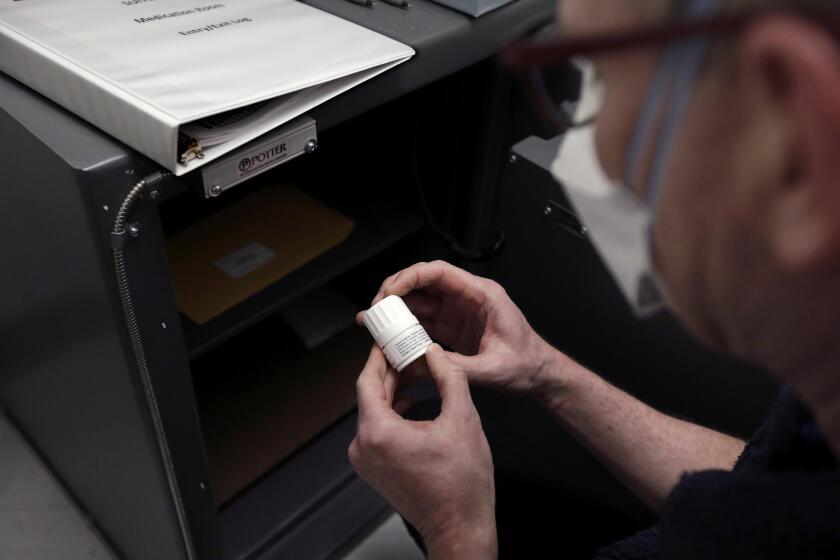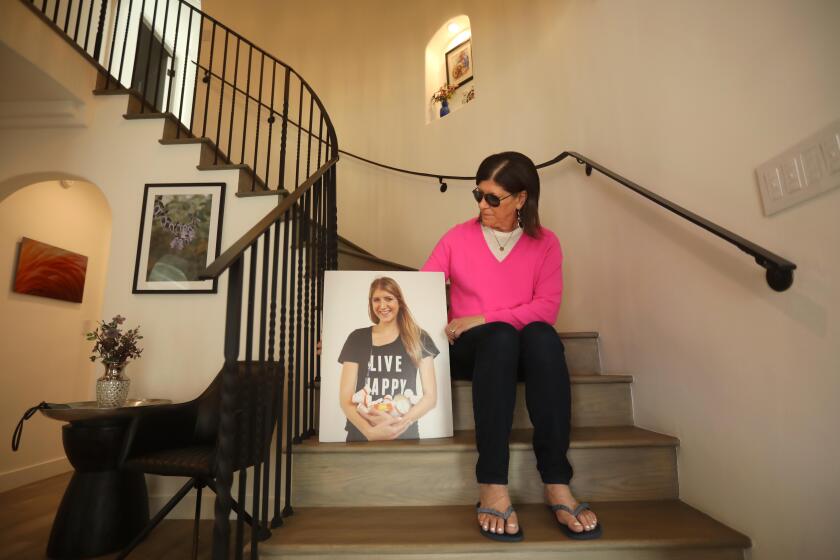Atom Scientists Organization Sees Threat of Annihilation Eased : INF Treaty Resets Doomsday Clock--Now Six Minutes to Midnight
In six minutes: Doomsday. The skies will burn and life will end.
That’s the bottom line, metaphorically speaking.
For 40 years, the Bulletin of the Atomic Scientists has published on its cover the face of a clock ticking away toward midnight. Internationally recognized as the voice of reasonable alarm, the Bulletin’s doomsday clock serves as a simple and direct symbol of the dangers of this Nuclear Age.
Six minutes to midnight is how it stands now. Frightening, but an improvement.
During the hydrogen bomb tests of the 1950s, it stood as close as two minutes.
For the last 15 years, until the signing of a treaty eliminating an entire class of nuclear weapons in December, it had been moving ever closer to the zero hour.
Between 1984 and 1987, the doomsday clock was poised at three minutes to the end.
Hands Moved Back
But in January, the noted and Nobel laureate scientists who determine the movement of the clock decided it was time for a change in direction. Citing the Intermediate-range Nuclear Forces Treaty, “the improvement in superpower relations, and the increase in international and nongovernmental efforts to reverse the arms race,” they pushed the minute hand back three notches, doubling the distance to Armageddon.
The staff of the Bulletin threw a party.
“It’s been a long time, since the SALT I treaty in 1972, that there was any reason to celebrate,” says Nancy Myers, the Bulletin’s managing editor. “For the first time in a long time, we have a reason to hope.”
Manhattan Project
Neither the Bulletin nor its clock started on such a note. The physicists who started the project had recently completed another one--the Manhattan Project--and they were filled with a rare sort of fear fueled by knowledge rather than ignorance.
“We were the only guys who knew what was going on, and it frightened the hell out of us,” says John Simpson, a space scientist with the Enrico Fermi Institute in Chicago and founding chairman of the Atomic Scientists.
“The Army kept telling us they were going to educate the public about the bomb, the government kept telling us, but of course they never did,” Simpson says. “So we had to take it upon ourselves.”
From the beginning, the scientists had a certain amount of celebrity on which to launch their educational campaign; Albert Einstein, Edward Teller, and J. Robert Oppenheimer were all original participants. The magazine’s list of 45 sponsoring scientists boasts 16 Nobel Prize winners, including Linus Pauling, the first man to win two prizes, one for chemistry and one for peace.
Public Not Aware
But within a couple of years, Simpson says, it became clear that the weighty, intellectual articles of the Bulletin were lost on the general public.
“The American public doesn’t want to know the details, they just want to know the bottom line,” he says. “So we gave them the clock, the absolute bottom line.”
Myers agrees. “A good concrete symbol is worth thousands and thousands of words,” she says.
The Bulletin’s slogan for the clock: “We tell the world what time it is.”
Simpson says he cannot recall all the arguments that went into originally placing the clock at seven minutes to midnight, though he believes “we were actually somewhat optimistic starting there.”
Direction Significant
But, he adds, “the actual position of the clock is not an exact thing--it’s a judgment, not based on any mathematical formula--and where it stands is not as important as the direction it’s going. It gives a sense of how we’re doing as a species.”
Although the position of the clock is discussed twice a year at board meetings, it has only been changed a dozen times since 1947 and it has not changed easily. As Eugene Rabinowitch, a co-founder of the Bulletin, once said, the clock “is not intended to reflect the momentary international situation but the trend of human society toward or away from nuclear catastrophe.”
Yet, the doomsday clock has moved four times since 1980: from nine, to seven, to four, to three, and then fortunately, a move back.
‘A Lot Happening’
“Well, a lot has been happening lately,” says James Cronin, a University of Chicago astrophysicist who won the 1980 Nobel Prize for physics for his discovery of a lack of symmetry between matter and anti-matter. “And until recently, most of it had been fairly frightening.”
But Cronin, like the other atomic scientists, finds himself somewhat caught up in the hopeful glow of Soviet glasnost (openness) and superpower summits.
“I think it’s terrific,” he says. “I guess my only reservations are that this really should cause a whole series of good things to happen, and we shouldn’t give up those expectations. If we can nudge that along by moving the clock, then that’s good, too.”



